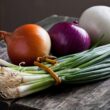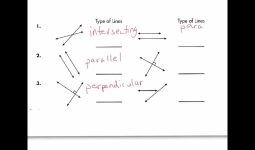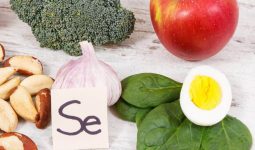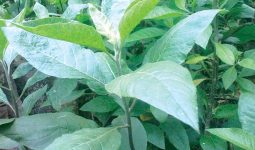Real raw honey is scarce and very expensive; this is due to the high demand for honey for its medicinal, nutritional and beautifying properties.
Also the high rate at which bees are being destroyed due to wrong methods of harvesting honey in Nigeria (they set their colonies on fire to kill them before harvesting honey) and insecticides used during farming that kills the bees is also a contributing factor to why real honey is scarce and expensive.
There are lots of fake honey everywhere especially in Nigeria because some heartless individuals want to make money by all means even when it will cost someone’s life. In northern Nigeria; they sell sugar syrup to people who don’t know how to tell original honey from fake.
This sugar syrup is made by boiling white refined sugar in water until it turns brown and thick like honey; then it is packaged in bottles with different sizes and labeled honey.
Sometimes they dilute real honey with water or sugar syrup and this adulterates the honey and affects its nutritional and medicinal properties.
I know someone who lost her uncle to diabetes because of this. He was buying and taking sugar syrup thinking it was honey until it was too late.
These days the love of money has made people heartless, they want to make money at the expense of someone’s life and I wonder how they sleep comfortable at night when they know that what they are doing is wicked; so we need to be wise, we need to know how to identify real foods from fake, we need to know what is going into our bodies.
I will show you ways to tell a real honey from fake, impure, artificial or adulterated honey; yes you can do this at home and don’t need to go to any laboratory.
Checking the purity of honey
One thing we should know regarding pure honey is that it is not manufactured in the factory; it comes from bees. So below are the ways to check the purity of honey at home.
To know how pure your honey is and to be very sure that it has not been mixed with sugar syrup, water, molasses, flour, sand, sawdust or even ground chalk just to make it thick; you can run the below tests at home.
- The thumb test: Put a small drop of the honey on your thumb; watch it closely and notice if it spreads or not. An impure honey will spread or mix while a pure honey will remain intact on your thumb.
- The water-vinegar mix test: Add some water to the honey; then add 2 to 3 drops of vinegar into the honey too. Mix them very well and observe the solution for about 3 minutes. The solution will start becoming foamy if the honey is adulterated while a pure honey will remain intact and won’t produce foam.
- The water test: Get a glass of water and add a tablespoon of honey to it; an artificial honey or an adulterated one will dissolve in water and you will see it around the glass while on the other hand, if the honey is pure, it will remain intact and settle right at the bottom of the glass.
- The flame test: Fire can be used to check the purity of honey because organic honey is flammable; this test is used to know if a honey sample is 100% pure, get a dried matchstick and dip its tip inside the honey.
Strike the tip on the matchbox as if you want to light it. If the matchstick lights then the honey is pure and it will keep burning off the honey but if it is impure it will not light because of the moisture and other impurities that have been used to adulterate the honey.
How to tell if a honey sample is fake or pure?
The above tests are ways one can check the purity of honey at home; the results will help you know if the honey you bought have been mixed or not.
Now we will be looking at how to tell if a sample of honey is real or fake.
- An adulterated or fake honey foams while pure honey will not foam under any circumstance.
- An impure or artificial honey spreads easily; it spills, drips and is runny while pure honey is very thick and trickles only in a stream.
- A fake honey has clumps and also has a rough texture while real honey has a soft texture like a filament.
- Artificial honey separates into layers very easily while a pure honey never separates into layers.
- An adulterated honey may smell foul or may have no smell at all while real honey has the aroma of honey.
- When you dip your finger in the honey sample and rub it inbetween your fingers; an artificial honey will be sticky or fairly sticky because it has been mixed with many things while pure honey is not sticky if you rub it inbetween your fingers.
- When you taste fake honey; the sweetness remains because of added sweeteners and sugars while the case of pure honey is different. When you taste pure honey; the taste goes away in a matter of minutes and does not linger in the mouth.
- When you heat a sample of honey; if it is fake, it will foam and form bubbles because of the adulteration, while pure honey will quickly caramelize and will not form foam when heated.
- When added to water; a fake honey will dissolve very fast; when added to methylated spirit, it dissolves quickly and forms a milky solution while a pure honey sample will never dissolve in water or methylated spirit. Pure honey settles at the bottom of the water or methylated spirit except when stirred thoroughly.
- When you spread honey on a slice of bread; if it is a fake, it will wet and moisturize the bread, this is because of the adulteration with moisture and additives but if it is pure it will solidify the bread in a few minutes.
- When poured on a white piece of cloth or on a blotting paper; fake honey will be absorbed by the blotting paper or it will stain the white cloth while pure honey do not get absorbed by a blotting paper and it won’t leave stains on a white piece of cloth. You can also use a normal paper; place the honey on the paper and if it wets the paper and perforates it fast then the honey is fake but if it doesn’t wet the paper and doesn’t perforate then the honey is pure.
- Fake honey has no particles; it is clean or neat in appearance while pure honey has particles that look like dirt most times but they are pollen and body parts of bees.
- When you mix honey and egg yolk in a container and stir it well, the egg yolk will have no effect on the honey if it is a fake while if the honey is pure the egg yolk will appear cooked.
- When stored for a long period of time; a real honey will form a thick and crystalline clump at the bottom of the container while an artificial honey will not.
The above tests and methods should help you know if your honey is real or not.








